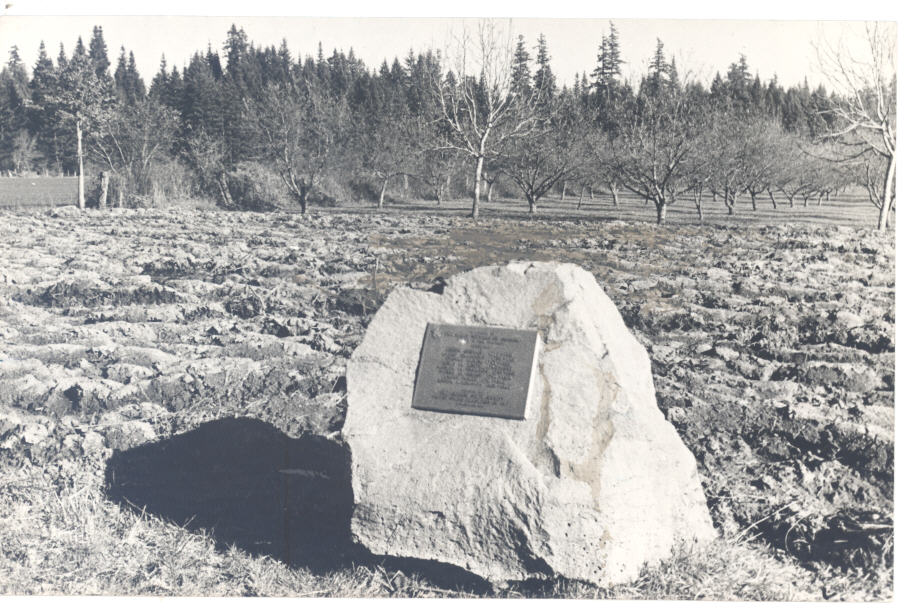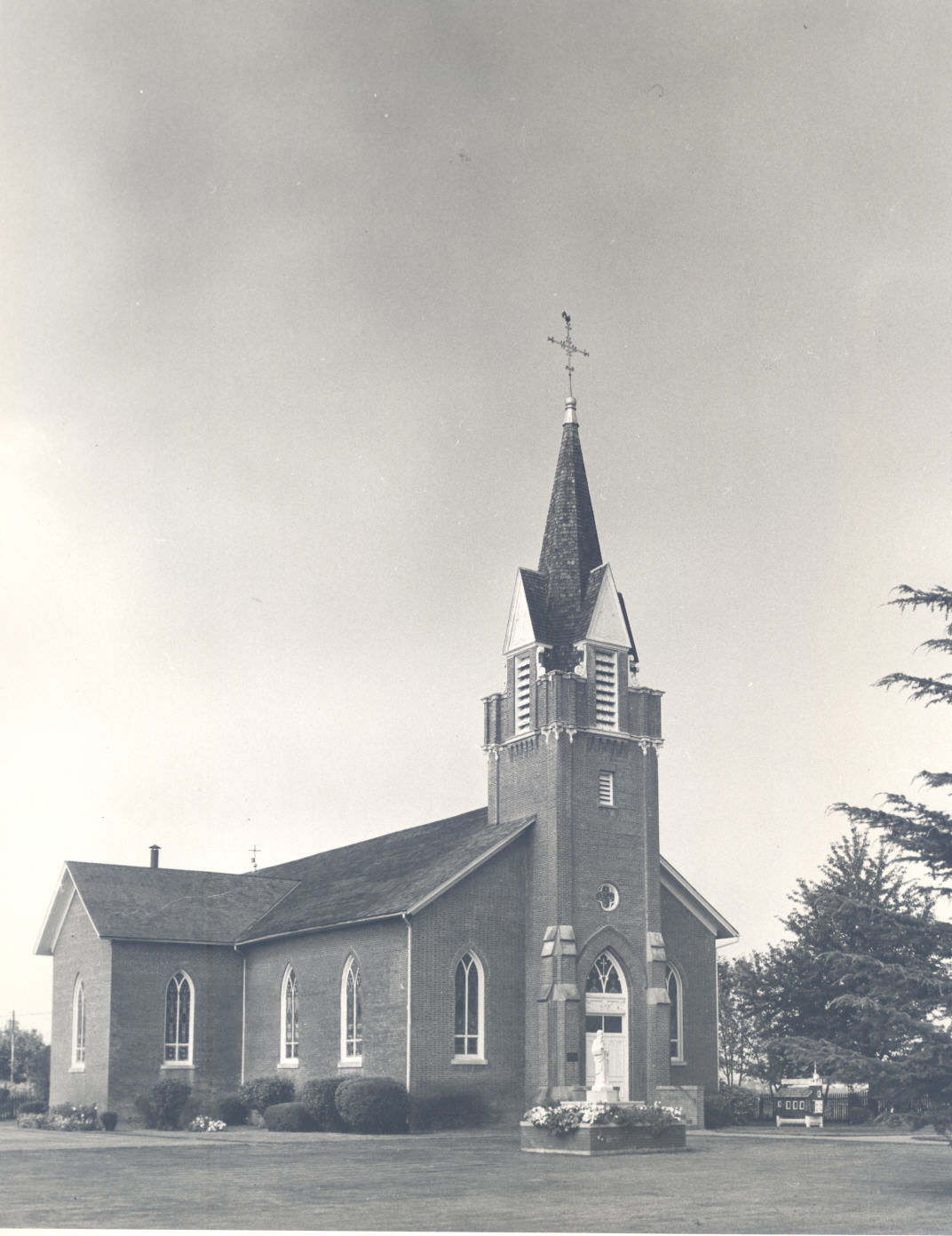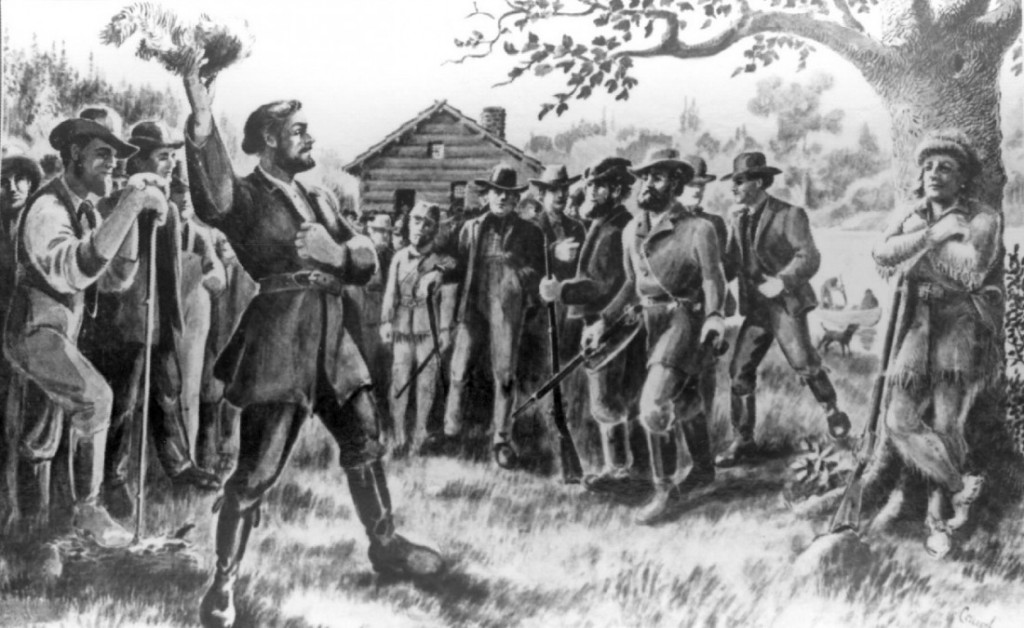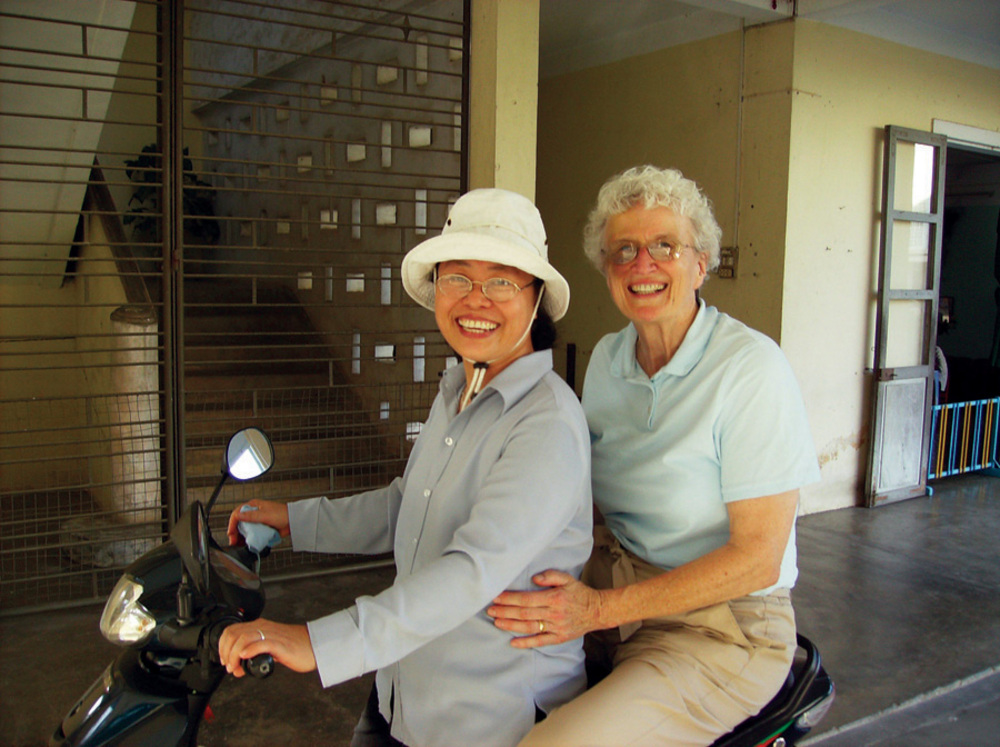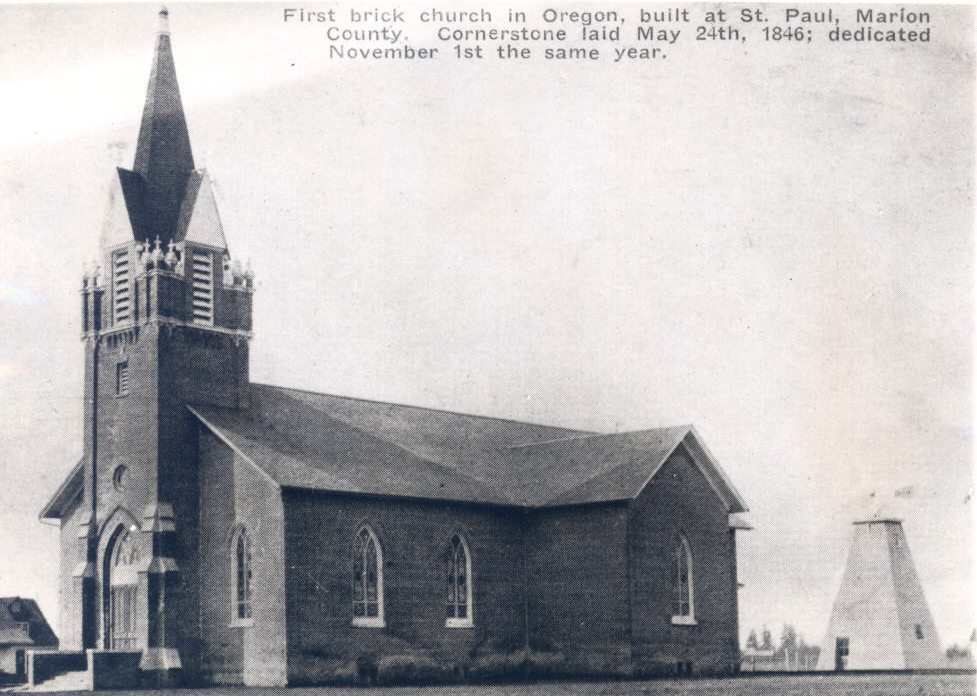The town of St. Paul, established in 1839, was the first Catholic mission in the Oregon Country south of the Columbia River. Rev. Francois Norbert Blanchet, the newly arrived French Canadian missionary, established the mission for the French Indian families then living in French Prairie area of the Willamette Valley.
The St. Paul mission, along with the missions at Fort Vancouver and the Cowlitz Prairie (both in present-day Washington State) were part of the first Catholic missionary effort in the Pacific Northwest. Father Blanchet was appointed by and reported to the Archbishop of Quebec City, in Lower Canada (Quebec).
The first St. Paul cemetery, also established in 1839, lay next to the small log church the French Prairie settlers had constructed for their nascent community. The site was the main burying ground for St. Paul until 1875; the last family burial was in 1891. It is located on the east side of Main Street in St. Paul, on Highway 219 North. The current cemetery is located at the end of Church Street on the southwest corner of town, on Highway 219 South. Although a small number of graves may have been moved to the newer cemetery, most of the original graves remain at the original site, now known as the St. Paul Pioneer Cemetery.
Because the original wooden and stone grave markers were either lost or damaged, no individual grave markers remain from the nineteenth century. Today, it is a commemorative park and features a series of informational plaques and one later gravestone, that of local settler William Cannon, who reportedly traveled to Oregon in 1814 with John Jacob Astor’s Pacific Fur Company.
In 1935, the Oregon State Society of the Daughters of 1812 installed a plaque “in memory of the early settlers of Oregon” buried in the cemetery, naming Joseph Gervais, André Chalifoux, Étienne Lucier, Louis Labonté, Michel La Framboise, Pierre Lacourse, André Picard, and Joseph McLoughlin, son of John McLoughlin. The cemetery also contains approximately 550 other graves, including the male settlers’ Native wives and children and local Kalapuyans and their children. The Parish of St. Paul installed a series of ten engraved stone panels that document the names of all individuals known to have been buried in the pioneer cemetery between 1839 and 1891.
The modern St. Paul cemetery, which provides visitors with an expansive view of French Prairie, contains the graves of the Most Rev. Francis Norbert Blanchet, who later become the first archbishop of Portland; Blanchet’s nephew, the Right Rev. François-Xavier Blanchet; and the Rev. J. DeCraeme. A nearby grave marker memorializes the Sisters of the Holy Names of Jesus and Mary, who served the St. Paul Parish and were buried in the cemetery between 1870 and 1912.
The ethnicity of the local residents interred in the St. Paul cemetery provides evidence of the changing demographics of French Prairie, as Americans of Irish and German ancestry came to settle in the area alongside French Indian and Kalapuyan families. The cemetery remains in use and includes the graves of local residents who died serving the United States in Afghanistan and Iraq.
-
![Ceremony in honor of Francois Norbert Blanchet, held at his gravesite]()
St. Paul Roman Catholic Church, cemetery, 1939 .
Ceremony in honor of Francois Norbert Blanchet, held at his gravesite Courtesy Oreg. Hist. Soc. Research Library
-
![United States Daughters of 1812 historical marker lists Joseph Gervais, Etienne Lucier, and Andred Picard among earliest non-Native Oregonians to be interred.]()
St. Paul Cemetery, Daughters of 1812 marker, 1938.
United States Daughters of 1812 historical marker lists Joseph Gervais, Etienne Lucier, and Andred Picard among earliest non-Native Oregonians to be interred. Courtesy Oreg. Hist. Soc. Research Library, OrHi102065
-
![]()
St. Paul Roman Catholic Church.
Courtesy Oreg. Hist. Soc. Research Library, 984d158
-
![]()
Father Francois N. Blanchet.
Oregon Historical Society Research Library OrHi 61321 & bb004274
Related Entries
-
![Etienne Lucier (1793-1853)]()
Etienne Lucier (1793-1853)
Etienne Lucier, one of the first French Canadians to settle in the mid-…
-
![Francois Blanchet (1795-1883)]()
Francois Blanchet (1795-1883)
François Norbert Blanchet arrived in Oregon in November 1838 as …
-
![French Prairie]()
French Prairie
Located in Oregon's mid-Willamette Valley, French Prairie was resettled…
-
![Joseph Gervais (1777-1861)]()
Joseph Gervais (1777-1861)
Joseph Gervais was a prominent French Canadian settler in the Willamett…
-
![Sisters of the Holy Names of Jesus and Mary]()
Sisters of the Holy Names of Jesus and Mary
The Holy Names of Jesus and Mary is a Roman Catholic women's religious …
-
![St. Paul]()
St. Paul
St. Paul was one of the first white settlements in Oregon, established …
-
![St. Paul Roman Catholic Church]()
St. Paul Roman Catholic Church
The St. Paul Roman Catholic Church was established in the mid-Willamett…
Related Historical Records
Map This on the Oregon History WayFinder
The Oregon History Wayfinder is an interactive map that identifies significant places, people, and events in Oregon history.
Further Reading
Jetté, Melinda Marie. "‘we have allmost Every Religion but out own': French-Indian Community Initiatives and Social Relations in French Prairie, Oregon, 1834-1837." Oregon Historical Quarterly 108 (Summer 2007): 222-245.
Jette, Melinda Marie. At the Heath of the Crossed Races: A French-Indian Community in Nineteenth-Century Oregon, 1812-1859. Corvallis: Oregon State University Press, 2015.
Munnic, Harriet Duncan and Mikell Delores Warner, eds. Catholic Church Records of the Pacific Northwest: St. Paul, Oregon, 1839-1898. Portland, Ore.: Binford and Mort, 1979.
Schoenberg, Wilfred, S.J. A History of the Catholic Church in the Pacific Northwest, 1743-1983. Washington, D.C.: The Pastorel Press, 1987.


